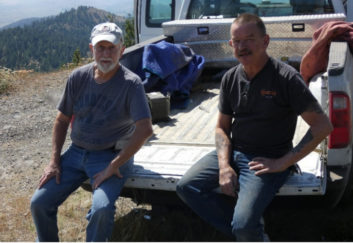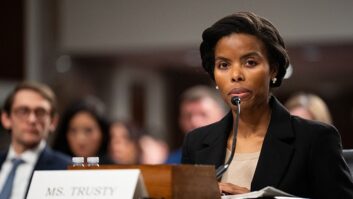
In September, Clay Freinwald will step down from his role as chair of the State Emergency Communications Committee in Washington state.
He has held that volunteer position longer than the Emergency Alert System has existed. Indeed, in 1996, when Freinwald was asked — by Entercom engineer John Price and the late Jimmy Hocutt of the state’s Emergency Management Division — to chair the SECC, the task at hand was to help write the state EAS plan, because the FCC was phasing out the Emergency Broadcasting System.
Several of the people who joined the committee at that time are still on it 25 years later, including current Vice Chair Ted Buehner.
[Read: Washington State EAS Is Evolving]
Freinwald continues to work part-time at Northwest Public Broadcasting as a telecommunications engineer, where he recently was involved with a transmitter installation at KQWS(FM) in Omak, Wash. He also provides site services for four American Tower sites around Seattle; he does contract work for KIRO(FM) and KING(FM); and he helps out at Bustos Media station KMIA(AM) in his hometown of Auburn, Wash.
He wants to spend more time on those activities as well as life at home; but said he’ll be available to work in other SECC roles if needed. “I would like to continue to deal with monitoring assignments, as this is part of our new plan,” he told Radio World.
Freinwald, who for a decade also chaired the EAS committee of the national Society of Broadcast Engineers, received Radio World’s “Excellence in Engineering” Award in 2007, and he was honored by the National Association of Broadcasters in 2018 with its Service to Broadcast Engineering Achievement Award. He’s also the rare engineer to receive a “Broadcaster of the Year” award from a state association; the Washington State Association of Broadcasters bestowed that honor in 1997.
New Plans in Place
In September the Washington SECC will roll out WA-PAWS, for Washington Public Alert and Warning Systems, incorporating updates as well as items required by the FCC for the EAS plan.
That’s timely, given that Congress and the commission are pressing states and their SECCs for a more organized and structured approach to alert management. But it seems Washington is one state that doesn’t need prompting.
Among the nation’s SECCs, the one in Washington has been among the most visible. When the commission asks for public input on an alerting issue, the Washington SECC usually is among those who reply. When the FCC began work on its Alert Reporting System, the state committee helped out with the beta testing.
Freinwald told me the group has historically tried to go beyond EAS by embracing all forms of public alert and warning. “Yes, Washington State’s program is different. We do what we feel should be done for the citizens here and are not limited by the FCC’s rules.”
He recalls being asked by the commission to send a copy of their state EAS plan, so he took a picture of its two large binders and asked if the commission really wanted copies of all of that information. (“We knew that one day we would want to change the title on the front of that binder.”)
[Read: Freinwald: Blue Alerts Offer No Tangible Improvements (2017)]
What might other states learn from the Washington experience?
“In many ways, our states are like ships passing in the night,” he said. “We all can, and should, be learning from each other. Washington has, perhaps, done a better job than some. Our goal to constantly improve is at the core of that.
“One of the biggest problems has been a lack of federal leadership and guidance,” he continued. “Some of this is based on the fear and/or respect for states’ rights, perhaps. The FCC recognizes this in that when states and territories submit their ‘plans,’ they get over 50 different approaches. The ARS will certainly help with this problem by providing some structure that has been lacking.”
But he noted that some states don’t even have a functioning SECC. “The fact that there is not a requirement to have one has not helped,” he said. “Clearly Congress was not happy with the situation in Hawaii, and this has started the ball rolling.”
He feels that the commission now is taking steps in the right direction but that it could do more. And he emphasizes that in Washington, EAS is a team effort.
“We work with a number of private and government entities. Communications is vital. We have email remailers for everyone in the state as well as one for the SECC members, and we do a lot of outreach and training.
“We have been blessed, and I am very proud of what we have been able to accomplish,” he said. “This is not to say that we are perfect; we are far from it, and have a lot of work to do going forward. There is always room for improvement.”







